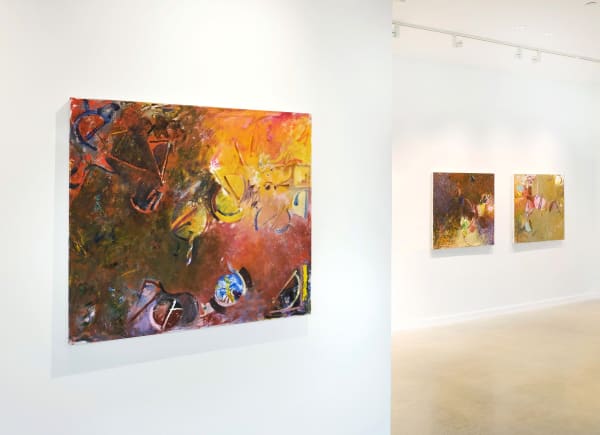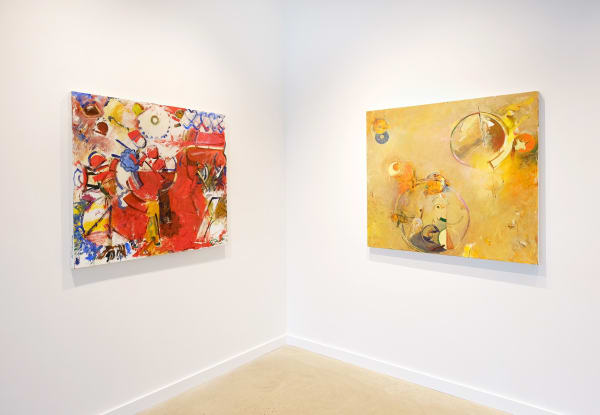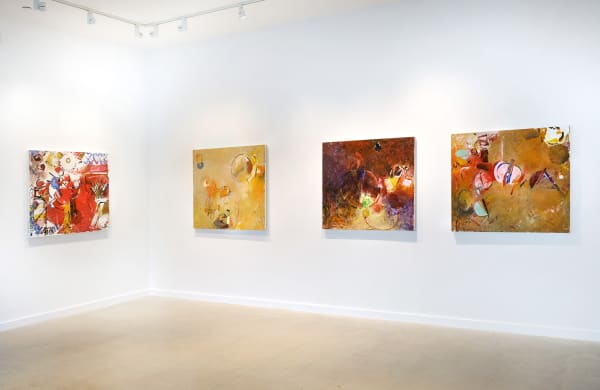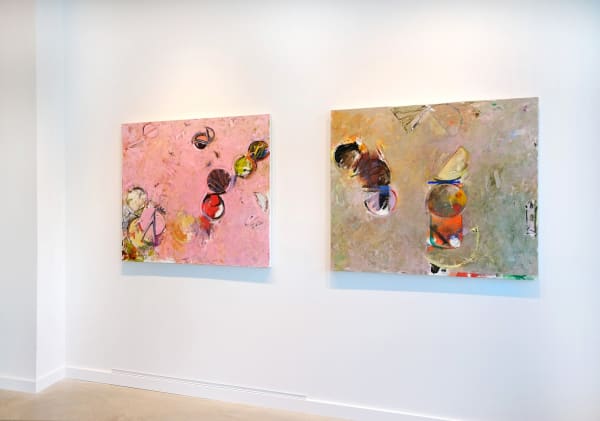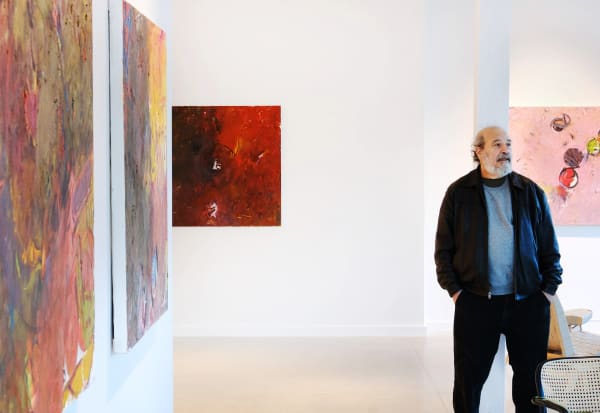Geoffrey Dorfman: Antikythera
Art critic David Carbone said of Geoffrey Dorfman's Antikythera paintings~“Each painting’s creation is a studio journey into the unknown, into the inchoate aspects of the self. Each encounter is like a wrestling contest between the artist and his anima—the dual nature of the self. When pictorial wholeness is achieved, lyric expressions remain through the expressive use of color in its varied emotional presence as paint—fiery and resplendent, yet austere. Each painting finds a different manifestation of the self, much as the ancient gods took on different forms to fool mortals and achieve a hidden goal. What this struggle achieves for the artist is to remove him from the anxiety of life and return him to himself. The results are both personal and universal. Ultimately, the responsive viewer will find that these paintings are portals for an unspoken pleasure. With each stroke of paint, like a prayer, we are taken into the heart.”
Geoffrey Dorfman’s Antikythera Paintings
Ever since Neolithic times, humans have been confounded by their relationship to the cosmos and the nature of reality. In the ancient world, the unfolding of numbers inspired a kind of sacred geometry, serving as both metaphysical creation myth and an aspect of revelation in itself. Since the collapse of the Roman civilization, the history of ancient civilization’s study of the Heavens has been lost to us.
Recently, fragments of an ancient Greek mechanical device found in a shipwreck in 1901 off the coast of the island of Antikythera, have been shown to be an astronomical calculator. This Antikythera device is humanity’s first analogue computer and is believed to have been designed by the great mathematician Archimedes. It is capable of calculating such heavenly events as the phases of the moon, eclipses, the movement of the stars—and even where and when the Olympics were to take place (held in a place dictated by planetary events, every four years on the first full moon after the summer solstice.
The device inspired in Geoffrey Dorfman an exploration of intriguing metaphysical concepts: the very nature of finite reality in an infinite, ever expanding cosmos, and the idea of physical form as metaphor. To some extent, each work employs fragments of plane geometry in the shapes of circles, ellipses, triangles, and gears, etc., alluding to the watch-like device itself and informing part of his varied and improvised vocabulary of forms.
Painting, as a process, is a game of creating interrelationships that yield a unified totality. As an abstractionist, Dorfman’s chief dialogue is between the painting as a field of forces and the appearance of emergent figures. Within the canvas rectangle, Dorfman activates the field with short strokes of thick, sensuous oil paint, slowly building into an expanding space, which may shift into several harmonious or contrasting zones. Out of this hive of painterly activity, gestural marks coalesce into shapes made comparatively dense by colors contrasting against the field, some docking at the painting’s outer edges—checking the field’s expansive energies—as others whir, glide, spin and unfurl from a succession of marks producing a sign, and, or developing into complex motifs.
What Dorfman seems to be enacting isn’t so much the motion of heavenly bodies in a vacuum, as motion inside matter. To the extent that our understanding of the concept of nothingness is intimately related to our knowledge of something, it’s a paradox. These ideas embodied on canvas are but the materialized containers for the essence of Dorfman’s expressive exploration of that paradox.
Each painting’s creation is a studio journey into the unknown, into the inchoate aspects of the self. Each encounter is like a wrestling contest between the artist and his anima—the dual nature of the self. When pictorial wholeness is achieved, lyric expressions remain through the expressive use of color in its varied emotional presence as paint—fiery and resplendent, yet austere. Each painting finds a different manifestation of the self, much as the ancient gods took on different forms to fool mortals and achieve a hidden goal. What this struggle achieves for the artist is to remove him from the anxiety of life and return him to himself. The results are both personal and universal. Ultimately, the responsive viewer will find that these paintings are portals for an unspoken pleasure. With each stroke of paint, like a prayer, we are taken into the heart.
-David Carbone
David Carbone is a painter and critic living in New York. He has shown in various public and private venues across the country and has written for a number of publications including Arts magazine, Art and Antiques, Modern Painters, The Sienese Shredder anthologies, The International Review of African American Art, Culture Catch, Artcritical.com, and Hyperallergic.











